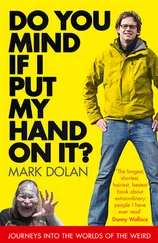Robert Monroe - Journeys out of the body, Practical Guidebook
Здесь есть возможность читать онлайн «Robert Monroe - Journeys out of the body, Practical Guidebook» весь текст электронной книги совершенно бесплатно (целиком полную версию без сокращений). В некоторых случаях можно слушать аудио, скачать через торрент в формате fb2 и присутствует краткое содержание. Жанр: Старинная литература, на английском языке. Описание произведения, (предисловие) а так же отзывы посетителей доступны на портале библиотеки ЛибКат.
- Название:Journeys out of the body, Practical Guidebook
- Автор:
- Жанр:
- Год:неизвестен
- ISBN:нет данных
- Рейтинг книги:5 / 5. Голосов: 1
-
Избранное:Добавить в избранное
- Отзывы:
-
Ваша оценка:
- 100
- 1
- 2
- 3
- 4
- 5
Journeys out of the body, Practical Guidebook: краткое содержание, описание и аннотация
Предлагаем к чтению аннотацию, описание, краткое содержание или предисловие (зависит от того, что написал сам автор книги «Journeys out of the body, Practical Guidebook»). Если вы не нашли необходимую информацию о книге — напишите в комментариях, мы постараемся отыскать её.
Journeys out of the body, Practical Guidebook — читать онлайн бесплатно полную книгу (весь текст) целиком
Ниже представлен текст книги, разбитый по страницам. Система сохранения места последней прочитанной страницы, позволяет с удобством читать онлайн бесплатно книгу «Journeys out of the body, Practical Guidebook», без необходимости каждый раз заново искать на чём Вы остановились. Поставьте закладку, и сможете в любой момент перейти на страницу, на которой закончили чтение.
Интервал:
Закладка:
Palpation is the first deepening technique that should be recalled when entering the phase.
Vision may be absent at the beginning of a phase experience, but the sensation of occupying a defined space is almost always present.
In the case of a completely absent sense of sight, only tactile-kinesthetic perception is possible. That is, movement throughout a space and the touching objects there is the only option when vision is absent. The sense of touch plays a key role in the perception of everyday reality. Accordingly, if the sense of touch is actively used in the phase space, it is only natural that the phase will deepen and reach its maximum potential.
Palpation is performed by fleetingly touching anything that may be found in the immediate surroundings. This should be done by quickly but carefully perceiving the feel of surfaces and shapes.
Hands should not remain on a particular place for more than one second, remaining constantly in motion to locate new objects. The goal of palpation is to touch and also to learn something about encountered objects or shapes. For example, if one feels a mug, one may touch it not only from the outside, but also from the inside. Once a practitioner has rolled out of the body, the bed may be touched; the physical body lying in bed may be touched, as well as the floor, the carpet, nearby walls, or a bedside table.
Another palpation technique is performed by rubbing the palms against each other as if trying to warm them on a cold day. Blowing on the palms also produces sensations that will help deepen the phase. Since tactile perception of the world is not limited to the palms, the hands should be moved over the entire body while in the phase to excite and fully activate the sense of touch.
As soon as palpation begins, the feeling that the phase is deepening and becoming fixed soon follows. Usually, it takes five to 10 seconds of palpation exercises to reach the maximum level of deepening. After performing this technique, the pseudo-physical sensations will be indistinguishable from those of everyday reality. If vision is absent on phase entry, it quickly emerges during palpation.
Peering is the primary technical variation of sensory amplification. However, it is not always initially accessible since it requires vision, which may begin as absent in the phase. Once vision appears or has been created using special techniques (see Chapter 8), peering may begin. The effectiveness of this technique originates in the fact that vision is the human’s primary instrument of perception.
Therefore, by exciting vision to its maximum potential within the phase, it is possible to attain a fully immersive phase state that is completely apart from normal reality.
Peering should be done at a distance of four to six inches from objects within the phase. A practitioner should glance over the minute details of objects and surfaces to bring definition to the phase space while increasing the quality of vision. When looking at hands, the lines of the palm or the fingernail and cuticles should be examined. If observing a wall, study the texture of its wallpaper.
When looking at a mug, one should look carefully at its handle, the curve of its rim, or any inscriptions. Attention should not remain on one area of an object for more than half a second. Active observation should constantly move to new objects and their minute details, approaching objects or picking them up to draw them nearer. It’s best when objects near one another; otherwise, too much time is spent moving around.
Peering brings quick and clear results. Usually, if vision is blurry and there is a yearning to return into the physical body, with just 3-10
seconds of peering all of this will be gone without a trace. After peering, vision adjusts as quickly and clearly as if a camera lens was correctly installed in front of the eyes, capturing the image in the sharpest of focus.
Simultaneous peering and palpation provide the maximum possible deepening effect in the phase. This method of sensory amplification engages the two most important perceptive, thus the effect is twice greater than when the two actions are separately performed. If vision is present in the phase, simultaneous peering and palpation is an absolute necessity because it facilitates good phase depth in the quickest and simplest manner.
The combination of palpation and peering must not only be performed simultaneously, but also upon the same objects. For example, while a practitioner may look at the hands and simultaneously rub them against each other; or while looking at a coffee mug, all of its parts may be observed and touched at the same.
It is necessary to maintain dynamism of action, remembering that feelings should be experienced not half-heartedly, remembering that full concentration on sensory amplification is an excellent means to a deep, quality phase.
SECONDARY DEEPENING TECHNIQUES
Diving Headfirst
Diving headfirst is used if sensory amplification techniques do not work, or when the practitioner in the phase is located in an undefined space where there is nothing to touch or look at. This technique works thanks to the unusual vestibular sensations that it causes, which help to enhance perception. This technique is performed with the eyes shut if vision is available and the practitioner literally dives headfirst into the floor or space at the feet. A feeling of movement away from the physical body will immediately arise during the flight down, and the dive itself will be experienced as if it is really happening. Simultaneously, the surrounding space may darken and become colder. Agitation or fear may also appear. After five to 15 seconds of flight, the practitioner is either arrives in an undetermined place in the phase or hits a dead end, like a wall. In the case of a dead end, a translocation technique should be used.
Translocation may also be attempted if deepening does not occur during the flight, if sense perception stops improving, or if a good degree of realism has already been achieved. An alternative to the translocation technique: hold the hands about four to six inches in front of the face and try to observe them without opening the eyes; this will move the practitioner to another random location.
When falling headfirst, do not think about the floor; assume that it will be penetrated. This very effective if the phase has not reached a fullness of depth.
A desire to not simply fall down observing one’s perceptions, but instead race swiftly downward while trying to move away from the body is extremely important. In case of failure to do so, instead of deepening, such a fall may lead to a return to the state of being awake, i.e. to a foul.
Vibration
Like falling headfirst, the vibration technique should be used if sensory amplification techniques do not work, or when the practitioner in the phase is located in an undefined space where there is nothing to touch or look at.
After separating from the body, it is normally quite easy to create vibrations by thinking about them, by straining the brain, or by straining the body without using muscles. The occurrence of vibrations provides a significant opportunity to deepen the phase. An advantage of this technique is that it does not require any preliminary actions and thus may be practiced at any moment.
The brain is strained to the maximum extent possible, which cause vibrations that may be intensified and managed through spasmodic or prolonged straining.
If this technique does not produce deepening after five to 10
seconds, the technique has to be changed or action should be taken at the practitioner’s current depth in the phase.
Aggressive Action
This technique may be used as an alternative to any other deepening technique since it can be used at any moment. Practicing this technique only requires aggressive action of the perceived body.
Читать дальшеИнтервал:
Закладка:
Похожие книги на «Journeys out of the body, Practical Guidebook»
Представляем Вашему вниманию похожие книги на «Journeys out of the body, Practical Guidebook» списком для выбора. Мы отобрали схожую по названию и смыслу литературу в надежде предоставить читателям больше вариантов отыскать новые, интересные, ещё непрочитанные произведения.
Обсуждение, отзывы о книге «Journeys out of the body, Practical Guidebook» и просто собственные мнения читателей. Оставьте ваши комментарии, напишите, что Вы думаете о произведении, его смысле или главных героях. Укажите что конкретно понравилось, а что нет, и почему Вы так считаете.










